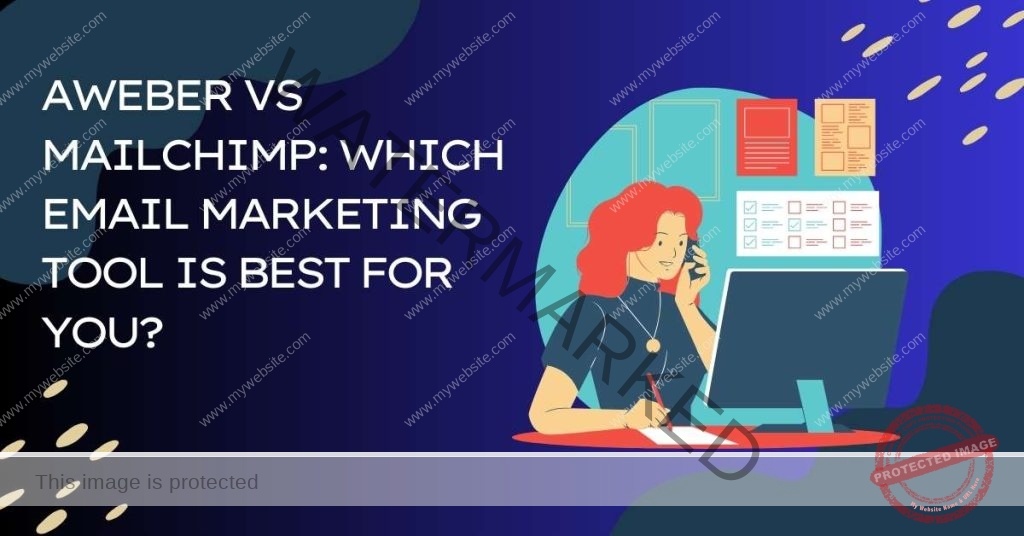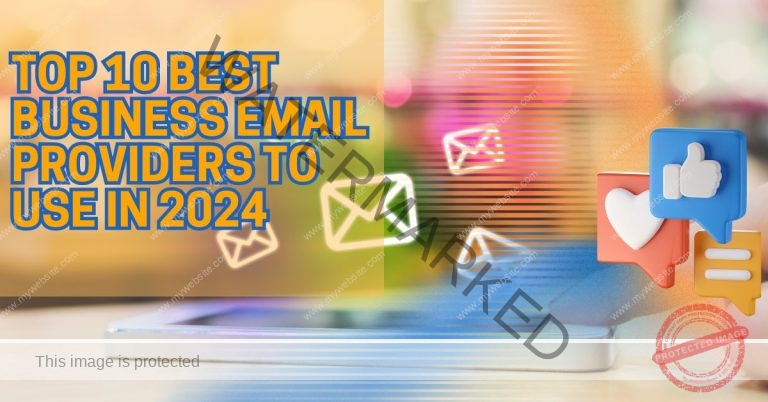AWeber vs Mailchimp: Which Email Marketing Tool is Best for You?
Email marketing remains a cornerstone for business growth and digital transformation. As someone who has been in the trenches of digital marketing for years, I’ve seen firsthand how the right email marketing tool can transform a business. Today, I’ll be diving into two of the most popular options on the market: AWeber vs Mailchimp. This comprehensive comparison will help you decide which tool is best suited for your business needs.
Overview of AWeber and Mailchimp
AWeber
AWeber has been a player in the email marketing game since 1998. It’s known for its simplicity and ease of use, making it a favorite among small business owners and entrepreneurs who are just starting with email marketing. AWeber offers a range of features including email templates, automation, segmentation, and analytics.
Mailchimp
Founded in 2001, Mailchimp has grown to become one of the most recognizable names in email marketing. It caters to a broader audience, from small startups to large enterprises, and is renowned for its robust feature set, including advanced automation, segmentation, and comprehensive analytics.
Feature Comparison
Email Campaign Creation
Ease of Use and User Interface Both AWeber vs Mailchimp offer intuitive user interfaces, but their approaches differ. AWeber’s drag-and-drop editor is straightforward, making it easy for beginners to design professional-looking emails. Mailchimp, on the other hand, offers a more polished interface with additional customization options, which can be beneficial for users looking for more control over their email designs.
Email Templates and Design Flexibility
AWeber provides a wide array of pre-designed templates, which are great for quickly creating visually appealing emails. However, during my early days of using AWeber vs Mailchimp, I found the templates a bit rigid when it came to customization. Mailchimp excels in this area, offering highly customizable templates that allow for more creative freedom.
Automation and Segmentation
Automation Workflows Automation is where Mailchimp truly shines. Its advanced automation workflows enable you to create complex customer journeys based on various triggers and conditions. For instance, I once set up an elaborate workflow in Mailchimp that segmented users based on their interactions with previous emails, leading to a significant increase in engagement.
AWeber also offers automation, but it’s more basic. While it can handle simple autoresponders and follow-up sequences effectively, it lacks the depth and flexibility that Mailchimp offers.
Segmentation Capabilities Both tools offer segmentation, allowing you to target specific groups within your audience. Mailchimp’s segmentation is more advanced, with options to segment based on purchase history, behavior, and more. AWeber’s segmentation is useful but somewhat limited in comparison.
Integration and Compatibility
Integration with Other Tools and Platforms Integrations are crucial for streamlining your marketing efforts. Mailchimp supports a vast range of integrations, from e-commerce platforms like Shopify to CRM tools like Salesforce. This broad compatibility has been a lifesaver for me when managing multiple tools in my marketing stack.
AWeber also offers integrations, though its range is not as extensive as Mailchimp’s. It covers the basics but may fall short if you rely on more specialized tools.
API Capabilities and Customization Mailchimp’s API is powerful and well-documented, making it easier for developers to create custom integrations and workflows. AWeber’s API is functional but not as flexible, which could be a limitation if you need extensive customization.
Analytics and Reporting
Types of Reports Available Both AWeber vs Mailchimp provide comprehensive reporting tools, including open rates, click-through rates, and conversion tracking. Mailchimp takes it a step further with more detailed reports and insights, such as geographical data and predictive analytics.
Data Visualization and Insights Mailchimp’s data visualization is superior, offering easy-to-understand charts and graphs. This has been particularly useful for me when presenting data to stakeholders or clients who may not be as familiar with the technical aspects of email marketing. AWeber’s reporting is solid but less visually appealing.
Pricing and Value for Money
AWeber Pricing Plans
AWeber’s pricing is straightforward, with a single plan that scales based on the number of subscribers. This simplicity is one of its strengths, making it easy for small businesses to predict costs. However, it can become pricey as your subscriber list grows.
Mailchimp Pricing Plans
Mailchimp offers a freemium model, which is great for startups or small businesses with limited budgets. Its paid plans are tiered, offering more features and higher subscriber limits as you move up. This flexibility allows businesses to scale their email marketing efforts without a significant upfront investment.
Comparison and Value Analysis
In terms of value for money, Mailchimp’s freemium model and tiered pricing give it an edge, especially for businesses that are just starting. AWeber’s pricing is more predictable but can become costly as your list grows.
Customer Support and Resources
AWeber
Types of Customer Support Available
AWeber offers 24/7 customer support via email and live chat, which has been invaluable during those late-night troubleshooting sessions.
Quality and Responsiveness of Support
I’ve found AWeber’s support team to be responsive and helpful. They’ve always been quick to resolve issues, which is crucial when you’re in the middle of a campaign.
Additional Resources
AWeber provides a wealth of resources, including webinars, tutorials, and a knowledge base. These resources are great for getting up to speed with the platform.
Mailchimp
Types of Customer Support Available
Mailchimp offers email and chat support, but phone support is only available on higher-tier plans. This can be a drawback if you prefer real-time assistance.
Quality and Responsiveness of Support
In my experience, Mailchimp’s support is competent but can be slower to respond, particularly on the free plan. However, their extensive documentation often allows for self-service solutions.
Additional Resources
Mailchimp excels in educational resources, offering detailed guides, video tutorials, and even online courses. These have been instrumental in mastering the platform’s more advanced features.
User Reviews and Feedback
AWeber User Experiences
Users often praise AWeber for its simplicity and reliability. Small business owners appreciate its straightforward approach and robust deliverability. However, some users find its automation features lacking compared to Mailchimp.
Mailchimp User Experiences
Mailchimp receives high marks for its feature-rich platform and versatility. Marketers appreciate the advanced automation and segmentation capabilities. The main criticisms are around its pricing structure and occasional support delays.
Pros and Cons
AWeber Pros and Cons
Pros:
- User-friendly interface.
- Strong deliverability.
- 24/7 customer support.
Cons:
- Limited automation capabilities.
- Can become expensive with larger lists.
Mailchimp Pros and Cons
Pros:
- Advanced automation and segmentation.
- Robust integrations.
- Freemium model.
Cons:
- Slower support response on free plan.
- More complex pricing structure.
Best Use Cases
When to Choose AWeber
AWeber is ideal for small businesses and entrepreneurs who need a straightforward, reliable email marketing tool. Its simplicity and ease of use make it perfect for those who are just starting with email marketing.
When to Choose Mailchimp
Mailchimp is best suited for businesses that need advanced features and are willing to invest the time to master them. Its robust automation and segmentation make it a powerful tool for more complex marketing strategies.
Conclusion
Both AWeber vs Mailchimp are excellent email marketing tools, each with its own strengths and weaknesses. AWeber’s simplicity and reliability make it a great choice for beginners and small businesses, while Mailchimp’s advanced features cater to more experienced marketers and larger enterprises.
In my journey through digital marketing, I’ve used both tools extensively. While AWeber was my go-to in the early days for its straightforwardness, Mailchimp has become my preferred choice as my needs evolved and grew more complex. Ultimately, the best tool for you will depend on your specific requirements and business goals.
Additional Benefits of Choosing the Right Email Marketing Tool
Selecting the right email marketing tool is not just about features and pricing. It’s about understanding how a platform like AWeber or Mailchimp can drive real benefits for your business. Whether you’re a small business owner looking to grow your audience or a seasoned marketer aiming to optimize your campaigns, making the right choice between AWeber vs Mailchimp can significantly impact your results.
Enhanced Engagement and Customer Relationships
With the powerful automation and segmentation features of both AWeber and Mailchimp, you can create highly personalized email campaigns that resonate with your audience. This leads to higher engagement rates and stronger customer relationships. Imagine being able to send tailored messages based on user behavior and preferences—this is where both AWeber and Mailchimp excel.
Improved Conversion Rates
Effective email marketing directly translates to improved conversion rates. By choosing between AWeber vs Mailchimp, you can leverage advanced analytics to understand what works best for your audience. Use these insights to refine your strategies and drive more conversions, whether it’s sales, sign-ups, or other desired actions.
Scalability and Flexibility
Both AWeber and Mailchimp offer scalability to match your business growth. As your subscriber list grows, these platforms can accommodate your increasing needs without compromising on performance. This flexibility ensures that your email marketing efforts remain effective and efficient, no matter the size of your business.
Cost Efficiency
One of the critical factors in the AWeber vs Mailchimp debate is cost efficiency. With Mailchimp’s freemium model, you can start small and scale up as needed, making it an excellent choice for startups. AWeber’s predictable pricing also offers value, especially for businesses that prefer a straightforward pricing structure.
Call to Action
Ready to take your email marketing to the next level? Subscribe to our mailing list for more expert insights and tips on making the most out of your email campaigns. Whether you decide on AWeber or Mailchimp, our resources will help you maximize your ROI. Check out our [service/affiliate link] to learn more about how AWeber vs Mailchimp can benefit your business.
By subscribing, you’ll gain access to exclusive content and special offers designed to enhance your email marketing strategy. Don’t miss out—join our community today and start transforming your email marketing efforts!
The right choice between AWeber vs Mailchimp can make all the difference. Optimize your campaigns, engage your audience, and drive conversions with the best email marketing tool for your business. [Subscribe to our mailing list/service/affiliate link] now and start your journey towards email marketing success!






